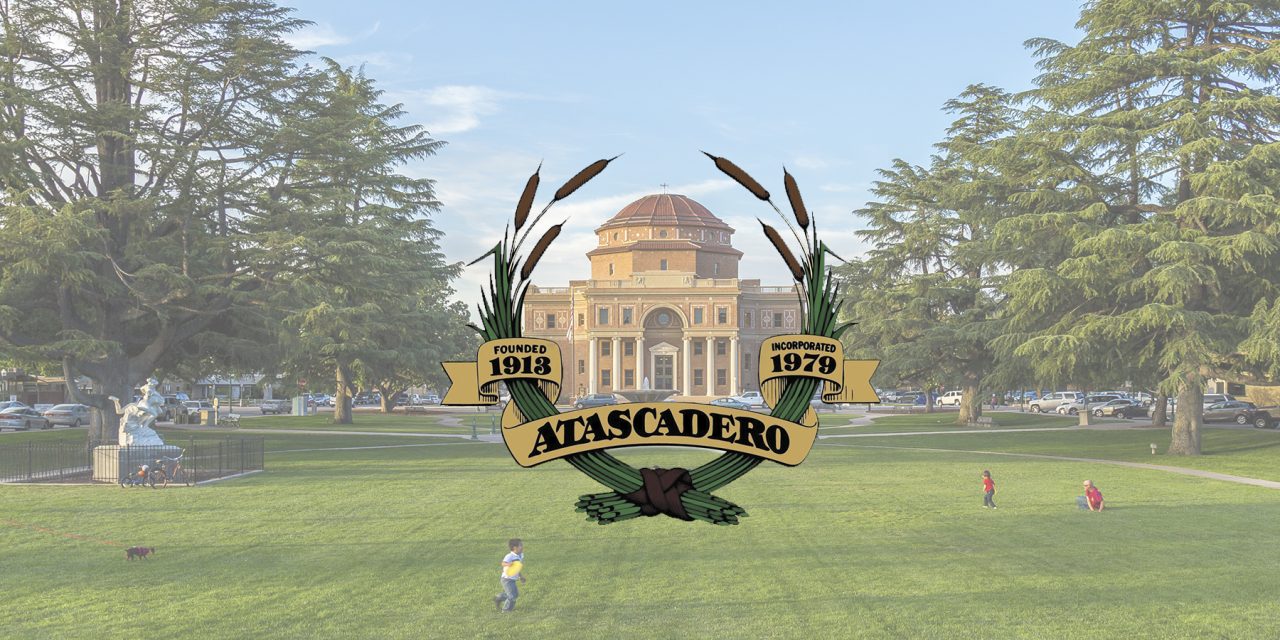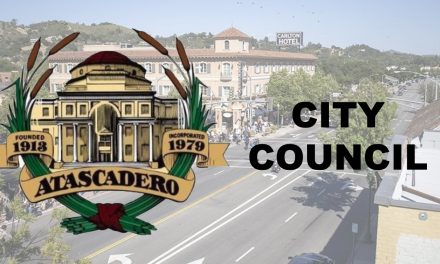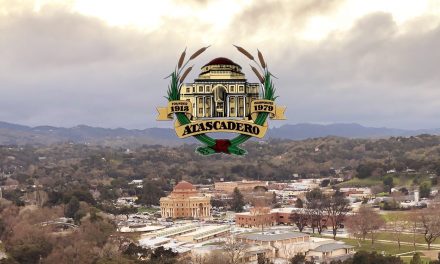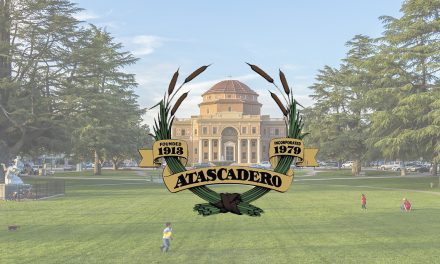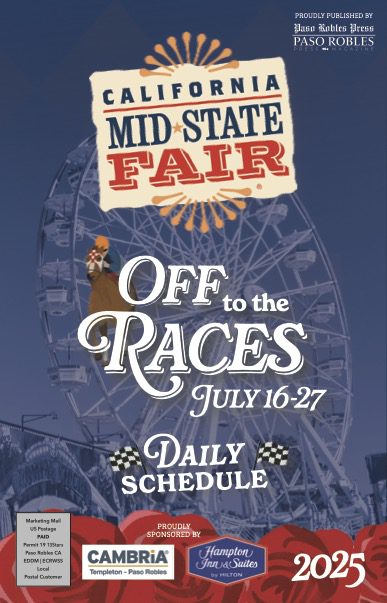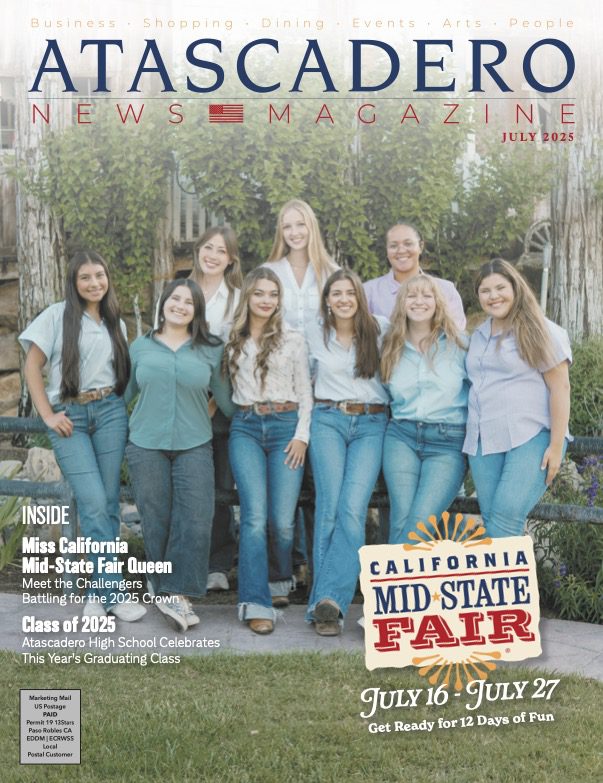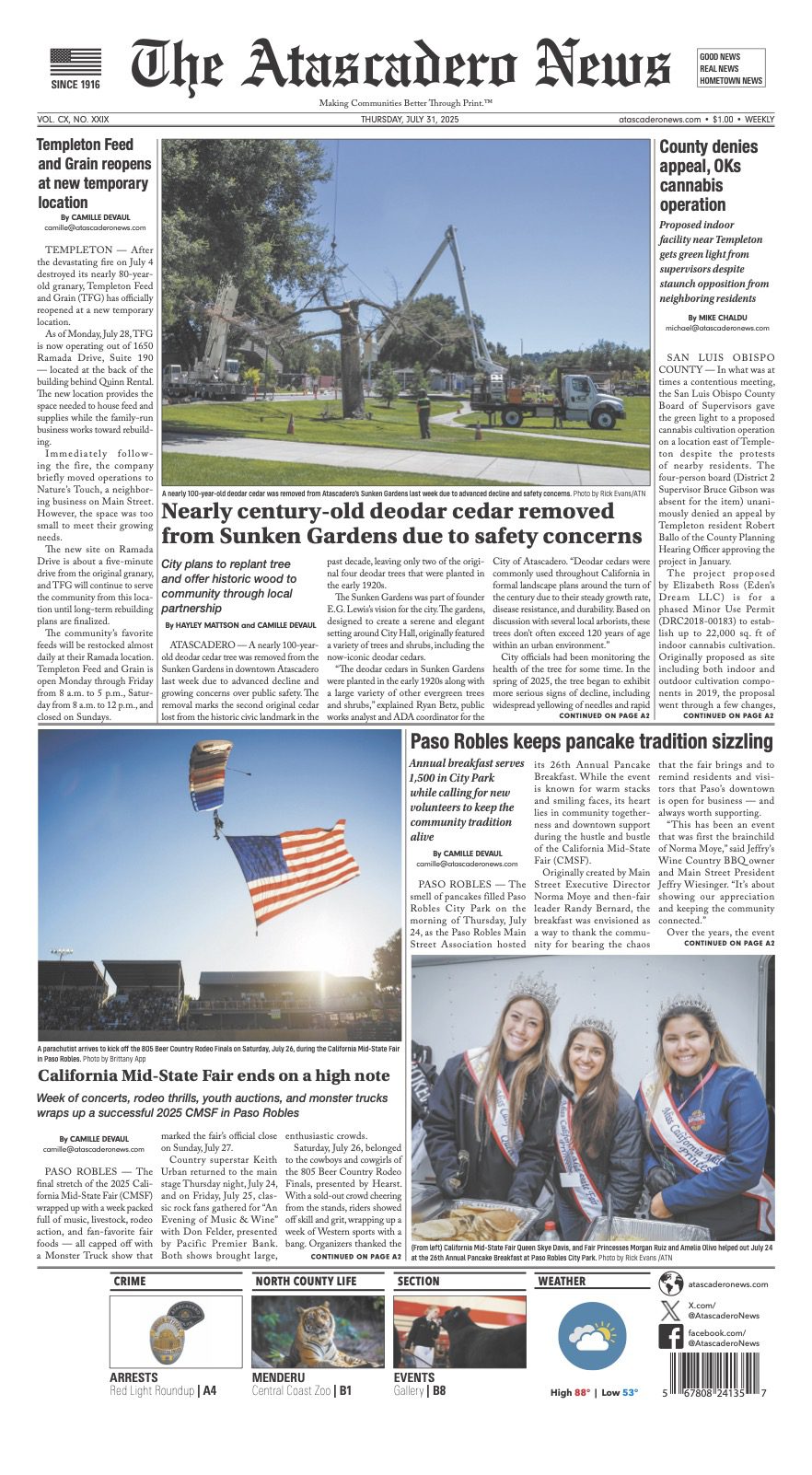Documents sent from Sacramento subject of much debate; direction given for city-issued WUI maps
ATASCADERO — Fire maps were the hot topic during the Atascadero City Council’s regular meeting on Tuesday, May 27, as the council discussed the adoption of the fire severity maps sent from the state, and gave direction to the staff on the city’s Wildland-Urban Interface (WUI) Fire Area maps.
The topic was the first public hearing of the evening, starting with the adoption of the 2025 Fire Hazard Severity Zone map. According to the staff report prepared by Atascadero Fire Chief Casey Bryson, the Office of the State Fire Marshal recently released updated Fire Hazard Severity Zone (FHSZ) maps for all Local Responsibility Areas, including the City of Atascadero, with normal adoption by the city required by July 8.
The state FHSZ maps were discussed by a minimum panel of three councilmembers. Before the meeting, City Attorney Dave Fleishman informed the council that three of the councilmembers — Mayor Charles Bourbeau, Heather Newsom, and Seth Peek — could have conflicts of interest because they own properties in areas of town that could be rated higher in fire risk. However, Fleishman also noted that removing all three from the item would leave the council without the minimum three members for a quorum.
Fleishman’s suggestion was that the three councilmembers in question would draw straws, with the short straw staying on council for the item, the other two recusing themselves, although they would be allowed to remain and listen to the discussion and speak through public comment if desired. Bourbeau, Newsom, and Peek agreed to this, with Newsom drawing the short straw to join the quorum with Mayor Pro Tem Mark Dariz, who took the gavel from Bourbeau, and Councilmember Susan Funk.
The report to the council, given by AFD Battalion Chief of Community Risk Reduction Dave Van Son, informed the members that zones designated High (in fire hazard) would have the WUI building codes apply to all new construction starting on Jan. 1, 2026. In the Very High zones, the WUI building codes would apply immediately to the new construction and Accessory Dwelling Units (ADUs).
Newsom was the first to question fire department staff on the adoption of the state map and whether there are any penalties if the council chose not to adopt it. Van Son answered that they could, but the state would probably force them to adopt it anyway before the deadline.
Then Newsom stated her concerns about how the map would affect those property owners and their insurance policies, worried that if the insurers consulted the map, they might refuse to insure some homeowners in high-hazard areas. Van Son and Bryson said that the city received a press release and FAQ sheet from State Insurance Commissioner Ricardo Lara stating that the hazard maps will not affect insurance rates or availability. They said, however, that staff remain skeptical.
During Public Comment, Atascadero resident Geoff Auslin disagreed with accepting the map.
“For once, I’d like to see the city tell the state to go fly,” Auslin said. “Let’s not play darts with the insurance executives. Tell the state our fire department knows better on how to protect ourselves. The state doesn’t know anything about Atascadero. It’s time for the city to say no.”
Although the concerns of many on council and in the audience were about insurance status, Dariz believed that not adopting the map could hurt homeowners in their efforts to renew their policies.
“Rejecting the map could have an adverse effect with insurance; they may think we’re not taking it seriously if we do that,” he said. “If we accept and show that we’re taking it seriously, we could keep that going.”
Funk said she understood Auslin’s sentiment, but agreed with Dariz.
“It would be satisfying to tell the state to take this map and shove it, but it wouldn’t help us at all,” she said. “I don’t see a pathway to better insurance by refusing to accept this map.”
With that Funk moved to adopt the state map, with Dariz seconding, and it passed 3-0.
With Bourbeau and Peek returning to the council, discussion began on the second part of the item, with the subject being the WUI maps created by the city. This part of the item was to give the staff direction on the final maps, with no action to be taken.
Staff presented three options to the council to consider and direct staff to work toward: Option 1, to include the Very High, High, and Moderate FHZS on the state map; Option 2, to include only the newly designated Very High and High areas on the WUI map; and Option 3, which included just the state Very High or High zones and eliminating the custom zones on the WUI.
Staff recommended council to select Option 1, and expressly did not recommend Option 3.
Council seemed to be favorable to Option 1, although Funk and Bourbeau considered themselves “on the fence,” because of the increased construction costs to meet the building codes for fire protection. Staff estimated the construction costs would increase by $34,000 for a single-family home.
“I get heartburn thinking about us applying $34,000 in additional costs,” Funk said. “I can build to the new standard, but I’m not sure everyone else is going to.”
Peek, however, felt the increase would be worth it.
“I would build to the hightest standard anyway to protect my house from fire,” he said. “When you make your house more hardened, you’re doing things that make insurance companies smile on you.”
Newsom suggested that staff gather more info, see what other cities are doing with their WUI maps, and give more details on landscape limitations to mitigate fire hazards. Her and other councilmembers also asked if they could find technology to overlay the WUI and state maps to get a better grasp on what areas to cover.
City Manager Jim Lewis took those suggestions under advisement.
“That’s a lot of work, but we can probably get back to you on this in October,” he said.
The City Council will meet next on Tuesday, June 10, at 6 p.m.

